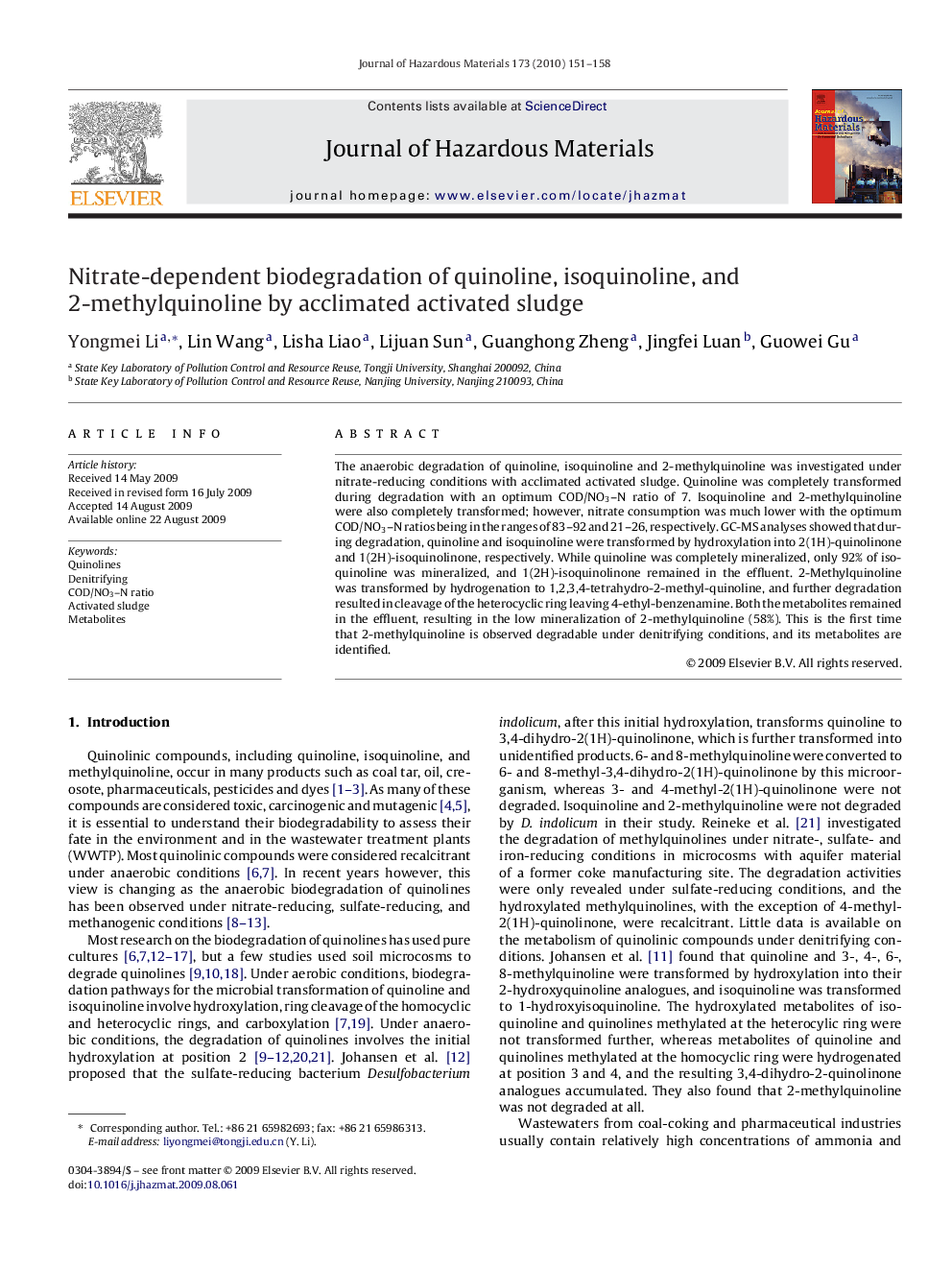| Article ID | Journal | Published Year | Pages | File Type |
|---|---|---|---|---|
| 580947 | Journal of Hazardous Materials | 2010 | 8 Pages |
Abstract
The anaerobic degradation of quinoline, isoquinoline and 2-methylquinoline was investigated under nitrate-reducing conditions with acclimated activated sludge. Quinoline was completely transformed during degradation with an optimum COD/NO3-N ratio of 7. Isoquinoline and 2-methylquinoline were also completely transformed; however, nitrate consumption was much lower with the optimum COD/NO3-N ratios being in the ranges of 83-92 and 21-26, respectively. GC-MS analyses showed that during degradation, quinoline and isoquinoline were transformed by hydroxylation into 2(1H)-quinolinone and 1(2H)-isoquinolinone, respectively. While quinoline was completely mineralized, only 92% of isoquinoline was mineralized, and 1(2H)-isoquinolinone remained in the effluent. 2-Methylquinoline was transformed by hydrogenation to 1,2,3,4-tetrahydro-2-methyl-quinoline, and further degradation resulted in cleavage of the heterocyclic ring leaving 4-ethyl-benzenamine. Both the metabolites remained in the effluent, resulting in the low mineralization of 2-methylquinoline (58%). This is the first time that 2-methylquinoline is observed degradable under denitrifying conditions, and its metabolites are identified.
Related Topics
Physical Sciences and Engineering
Chemical Engineering
Chemical Health and Safety
Authors
Yongmei Li, Lin Wang, Lisha Liao, Lijuan Sun, Guanghong Zheng, Jingfei Luan, Guowei Gu,
